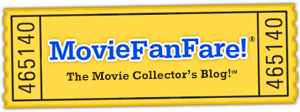
It was 60 years ago this week that tens of thousands of Americans’ bathing rituals began switching from showers to traditional tub baths. The reason wasn’t fear of slipping or water conservation. No, folks were on edge after having just seen “Master of Suspense” Alfred Hitchcock’s latest film, Psycho. The shock classic premiered at two New York City theaters on June 16, 1960, before its eventual nationwide release that September. Psycho would go on to gross $32 million, earning it the number-two slot behind Spartacus for movies that year.
Countless books and newspaper and magazine articles have detailed how Hitchcock’s black-and-white spine-tingler, shot on a modest budget of just over $800,000 with a crew from his Alfred Hitchcock Presents TV series, forever altered the look and feel of the Hollywood horror genre. Almost every aspect of the film–from designer Saul Bass’s opening titles to composer Bernard Herrmann’s score to Marion Crane’s shower scene–have been examined and critiqued in minute detail. What I’d like to do here is take a brief look at something that happened off the screen. As a result, the way that folks had been going to movie theaters was forever altered.

For decades, a night out at the cinema wasn’t anything like it is today, with everyone settling in for a half-hour of promos and commercials, another 20 minutes of trailers, and then the feature film. Back in the 1930s through the early ’60s, movie audiences usually got to watch a cartoon, a two-reel short subject or two, a newsreel, perhaps the latest chapter of a serial, and then the main picture (and yes, those “previews of coming attractions” came after the feature ended, hence the name “trailers”). For a double feature or a kids’ matinee, the order was changed a bit but essentially stayed the same.
Also, movies were playing continuously throughout the day and well into the night. As a result, attendees often came in on their own at any point in the proceedings and sat themselves down. Sometimes they’d catch the whole schedule of presentations, sometimes they’d show up in the middle of the feature film and wait for everything to play again before finally leaving “where they came in.”
This sort of behavior probably didn’t thrill filmmakers or the actors, but it was accepted etiquette. However, while arriving halfway through, say, Cowboy and the Senorita or The Jolson Story wouldn’t irreparably detract from one’s enjoyment of the plot, Hitchcock wanted to make sure that people didn’t saunter into Psycho at the one-hour mark and spend the rest of the picture wondering where Janet Leigh was.

His solution was a simple one, one that had been utilized by French filmmaker Henri-Georges Clouzot five years earlier for his own suspense gem, Les Diaboliques. This, however, was the first time it was tried in the U.S. Hitchcock simply told theaters not to admit anyone once Psycho had begun, and had special posters made up to announce the policy. As you can see from the above example, the tone was typically Hitchcockian tongue-in-cheek (“Any spurious attempts to enter by side doors, fire escapes, or ventilating shafts will be met by force”) but was serious and often rigorously enforced. Some theater managers were understandably reluctant to even temporarily turn away paying customers. But once they recognized the value in having long lines of folks eager to see Psycho standing on the street like a living advertisement, they soon came around.

Hitchcock’s “no admittance once the movie starts” campaign was a success. So successful that when “King of Gimmicks” producer/director William Castle made his own gender-bending psychological thriller, Homicidal, the following year, he tried topping it with the “Fight Break.” Shortly before the film’s denouement, the picture paused and an announcer declared that anyone too scared to watch the ending should leave now and go to the box office for a refund.

What Castle forgot–since folks could walk in to his picture at any time–was that they could stay through the next showing and then get their money back. This led him to revise his strategy and create “Coward’s Corner.” Now during the Fright Break, anyone getting up to exit would have a yellow spotlight shine on them while a voice announced “Watch the chicken! Watch him shiver in Coward’s Corner!” To get their refund, they would also have to sign a (yellow) card confirming their fraidy-cat status to the world.
Even Jerry Lewis got in on the Psycho bandwagon. The original posters for his 1963 comedy gem The Nutty Professor boldly beseeched audiences, “Please do not reveal the middle of this picture!”

